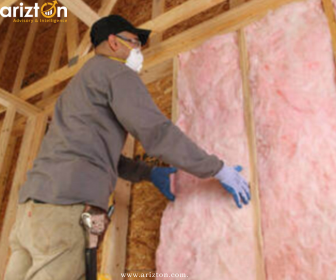Is Spray FoamInsulation the Next Big Investment? The U.S Market Could Top $1B by 2030
In today's energy-conscious world, the building materials we choose can make a significant difference in both environmental impact and long-term cost savings. One material that's seeing remarkable growth in the US construction sector is spray foam insulation—and for good reason.
Steady Growth Ahead
The U.S. Spray Foam Insulation Market, valued at $750.02 million in 2024, is on track to reach an impressive $1.01 billion by 2030. With a compound annual growth rate (CAGR) of 5.09%, this segment of the construction industry is outpacing many traditional building materials. Recent analysis of the Spray Foam Insulation Market size indicates substantial growth potential in both residential and commercial sectors.
What's driving this growth? A powerful combination of factors:
· Increasing emphasis on energy efficiency in both new construction and renovations
· Evolving building codes requiring better thermal performance
· Rising demand for sustainable construction materials
· Superior performance compared to traditional insulation options like fiberglass and cellulose
Why Builders and Homeowners Are Making the Switch
As U.S. Spray Foam Insulation Market trends continue to evolve, spray foam insulation stands out from conventional alternatives for several compelling reasons:
Superior Thermal Resistance
With R-values ranging from 5.5 to 7 per inch for medium and high-density products, spray foam creates a more effective thermal barrier than most alternatives. This translates directly to lower heating and cooling costs—a major selling point in regions with extreme temperatures.
Air-Sealing Excellence
Unlike batts or blown-in insulation that can leave gaps, spray foam expands to fill spaces, creating an airtight seal. This comprehensive coverage prevents energy loss through tiny cracks and seams, significantly improving HVAC efficiency.
Moisture Resistance
Particularly with closed-cell varieties, spray foam insulation creates an effective moisture barrier that helps prevent water infiltration and reduces the risk of mold growth, critical for both building longevity and indoor air quality.
Structural Benefits
Medium and high-density spray foams add structural integrity to buildings, making them especially valuable in hurricane-prone regions like Florida and Texas, where weather resilience is paramount.
Know More: https://www.focusreports.store/report/us-spray-foam-insulation-market
Spotlight on Innovation: Vendor Activities
Major players are investing in sustainability and cutting-edge insulation tech:
· BASF partnered with Suzhou Kinglong to supply flame-retardant, low-VOC spray foam for buses, expanding use cases beyond buildings.
· Dow launched the ENDURANCE HFDD-4201 SC Compound, which reduces greenhouse gas emissions and boosts manufacturing efficiency for insulation products.
· CertainTeed, Huntsman, Johns Manville, Covestro, and Carlisle continue to innovate across applications, from green-certified building materials to low-GWP polyurethane products.
Trends Shaping the Future
· Sustainability: Rising environmental awareness is driving demand for spray foam that reduces energy consumption and aligns with green building standards, highlighting key U.S. Spray Foam Insulation Market trends.
· Urbanization & Smart Cities: As cities modernize, the demand for airtight, high-performance insulation systems is escalating, especially in larger, energy-intensive buildings.
· Retrofitting Boom: Older homes are being upgraded with spray foam to improve efficiency, supported by tax incentives and rebate programs.
Challenges and Competition
Despite its advantages, spray foam insulation faces competition from alternatives like fiberglass, cellulose, and rigid foam board, which often present more budget-friendly options. Emerging eco-friendly materials such as recycled cotton, mineral wool, aerogels, and hemp-based insulation also challenge spray foam's market position with comparable benefits at potentially lower costs.
Future Outlook
The future looks bright for the Spray Foam Insulation Market in the US. With the construction sector booming—adding billions of square feet of industrial, office, retail, and storage space—demand for high-performance insulation continues to grow. As urbanization increases and energy-efficient infrastructure becomes a priority for smart cities, spray foam's superior thermal performance positions it as a leading solution for both new construction and retrofits. Current Spray Foam Insulation Market size projections reflect this positive trajectory.
For builders, contractors, and homeowners looking to maximize energy efficiency, structural integrity, and long-term cost savings, spray foam insulation represents an investment that continues to demonstrate its value in our increasingly energy-conscious world. According to the latest U.S. Spray Foam Insulation Market trends, this value proposition will only strengthen in the coming years.
About Focus Reports by Arizton
Welcome to Focus Reports, an esteemed Arizton Advisory & Intelligence subsidiary committed to delivering precise and insightful market research reports across all key geographies. Our unique selling proposition lies in our affordable pricing, accurate data, in-depth research, and presentation-ready reports. With us, expensive market research is outdated. We aim to be strategic, providing valuable data.
Contact Us:
Call: +1-312-235-2040
+1 302 469 0707
Mail: [email protected]
Website: https://www.focusreports.store/
